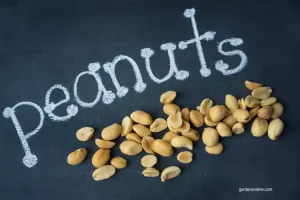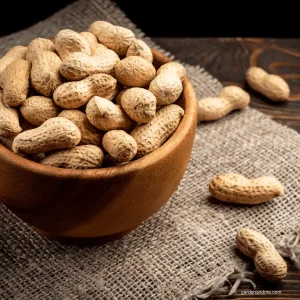When we mention peanuts, we often consider peanuts as fruits, vegetables, or something else entirely. In this article, we will explore the topic and its characteristics and the different perspectives on the classification of peanuts.

What are peanuts?
There is a type of edible seed called peanuts, and peanuts grow underground in pods. They develop within the pods, which are formed below the ground. The pod serves to protect and nourish the seeds as they grow. When harvested, the hard shell parts of a peanut are removed, and the edible seed inside is consumed. Peanuts are native to South America and have been cultivated for centuries as a valuable source of nutrition.
Peanuts grow in warm regions with well-drained soil. They are native to South America but are now cultivated in various parts of the world, including Asia, Africa, and North America. In the United States, peanuts are grown mainly in the southern states, such as Georgia, Texas, and Alabama.
Characteristics of peanuts
Arachis hypogaea, scientifically known as peanuts, has distinct characteristics that set it apart from other plants. The plant is classified as a legume and belongs to the Fabaceae family. It is relatively short, usually reaching around 1-2 feet. The leaves are compound and pinnate, with four leaflets. The plant also produces yellow flowers, which develop into peanut pods.
Botanical structure of a peanut plant
A peanut plant has a central stem with branches bearing compound leaves. The leaves are divided into four leaflets, elongated and lanceolate in shape. The plant also produces yellow flowers, which are pollinated by insects. After pollination, the flowers develop into seeds in pods containing every single seed.
Peanuts are unique in that they have the ability to grow underground. After the flowers of the peanut plant are pollinated, they send out a peg that eventually makes its way into the ground. The pod then develops underground, providing protection and optimal crop growth conditions.
The edible part of peanuts
Peanuts are edible and widely consumed around the world. The seeds of the peanut plant found inside the pod, commonly referred to as peanuts, are the edible part. The outer shell of the peanut is removed, and the inner seed is consumed. They can be eaten raw, roasted, or used as an ingredient in various dishes. They are used in various culinary applications, from snacks to desserts and savory dishes.
Are peanuts considered legumes, vegetables, or nuts?
Peanuts can be classified in different ways depending on the context. In culinary terms, peanuts are often considered nuts due to their taste, texture, and usage. However, from a botanical perspective, peanuts are classified as legumes since they grow in pods and belong to the legume family.
Are peanuts fruits or vegetables?
Peanuts are not commonly called vegetables. Vegetables are typically defined as the edible parts of plants, like root vegetables, stems, leaves, or flowers. Peanuts, on the other hand, are the plant’s seeds and are not commonly consumed like traditional vegetables.
Belong to the botanical terms; whole fruit is the mature ovary of a flowering plant, typically containing seeds. Fruits are formed from fertilized flowers and are crucial in seed dispersal. By this definition, we can consider fruits as peanuts since they develop from the ovary of the peanut plant.
Peanuts that we consider a fruit or vegetableslargely depend on the context and perspective in which they are being discussed. Although peanuts can technically be classified as fruits based on their botanical definition, they are not commonly referred to as such.
Peanuts as nuts
In culinary terms, peanuts are often referred to as nuts due to their taste and usage. Their taste, texture, and use are similar to other nuts, therefore peanuts are a popular snack with healthy fats to become savory dishes.
However, peanuts are not often referred to as nuts completely. True nuts are dry fruits that do not split open to release their seeds—examples of real nuts like almonds, walnuts, and cashews. Peanuts, conversely, are classified as legume fruits and belong to a different botanical category.
Peanuts as part of the plant called legume
A legume is a type of flowering plant that belongs to the Fabaceae family; it’s a valuable source of dietary protein and contributes to soil fertility through nitrogen fixation nutrition, and is consumed by humans and animals alike.
Finally, peanuts are considered legumes. Legume type of fruit that grows in a pod structure underground. The peanut pod contains two seeds, the actual peanuts we consume. The pod protects the seeds and provides them with the necessary nutrients to grow and develop; peanuts fit this description perfectly.
Like other legumes, including beans, lentils, and peas, peanuts can convert atmospheric nitrogen into a form that plants can use, making them an essential crop for nitrogen fixation. While peanuts are actually have some similarities to groundnuts, peanuts may differ from legumes because they grow underground and develop in a pod structure.

